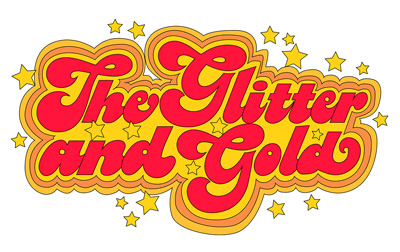Curating a record store is inherently philosophical. It involves seeing music not merely as a product but as a reflection of human experience and emotion. At Glitter Records, my curation approach is shaped by this belief. Each record is chosen not just for its sales potential but also for its ability to provoke thought, stir emotions, and contribute something new to the broader narrative of music’s history.
The Modern Record Store as a Living Art Form
What Makes a Remarkable Record Store? Daring to Be Different
My record store is more than merely a place to buy vinyl. The records I curate and how they are presented shape an ever-evolving atmosphere—a space where individuals come to define their own identities through music, a cultural landmark in people’s journeys, and an ongoing performance by an ever-changing cast of visiting characters.
At Glitter Records, I challenge preconceived notions of what defines a record store. Historically, record shops have been havens for countercultural ideas, where mainstream norms are questioned and alternative perspectives flourish. Yet, by adhering too rigidly to these traditions, we risk becoming orthodox in our nonconformity.
My approach at Glitter Records rejects the notion that a record shop must conform to a singular idea, genre or aesthetic. Instead, I embrace an eclectic mix of musical influences, creating a space that defies easy categorization. This rebellion against the conventional image of a record store is itself a philosophical statement, emphasizing the importance of flexibility, diversity, and personal evolution.
In light of the growing mainstream media coverage of Record Store Day as well as the popularity of vinyl records in advertising and films, there’s a risk of reducing independent record stores to one-dimensional clichés. Drawing inspiration from curator Hans Ulrich Obrist‘s innovative approach to contemporary art, Glitter Records counteracts entropic stereotypes with a similar philosophy to music curation. The store’s dynamic, interdisciplinary approach challenges traditional boundaries, fostering dialogue and discovery among a diverse community of people.
Curating Capitalism: Aesthetic Experience and Human Connection
Philosopher John Dewey‘s concept of aesthetic experience provides a framework to appreciate the unique allure of a record store. Dewey argues that aesthetic experiences extend beyond traditional art forms, encompassing everyday encounters that engage our senses and emotions. A modern record store provides tactile engagement with vinyl, auditory immersion in music, and a visual avalanche of album art—offering a rich environment for aesthetic encounters.
What is more, the social dimension of a record store enhances its philosophical significance. Conversations are sparked, recommendations are exchanged among strangers, and the thrill of discovering forgotten musical treasures deepens our connection to music and one another. This communal aspect resonates with existentialist ideas about finding meaning through relationships and shared experiences.
The Modern Record Store Transcends Nostalgia
Nostalgia often serves as a comforting response to rapid change. Despite what others suggest, the mission of my record store is not nostalgia. Yes I agree, many people visit record stores seeking a connection to their past, and while it gives me great pleasure to accommodate them, this is not my primary purpose.
In his recent collaboration with Gucci fashion designer Alessandro Michele, The Philosophy of Fashion, author Emanuele Coccia writes of clothing, “The garment must not merely situate the wearer in the 1970s or 2000s. It should create a space where both eras converge into an open experience for those who wear it and those who observe it.” Can we apply this same idea to a record?
Allow me to continue with this idea. When we listen to a shellac record from 1924, are we not experiencing emotions similar to those who heard this song a century ago? Consider a teenager hearing The Beach Boys or The Beatles for the first time in 2024 —is their emotional experience less valid from a person who heard it in 1964? If Alanis Morissette releases an album in 1994 about heartbreak, does she feel differently than Billie Holiday did in 1940 or Elvira Casazza did in 1916 singing the role of Cio-Cio San in Puccini‘s Madame Butterfly?
Incorporating Philosophical and Spiritual Insights
By integrating philosophy into the operations of Glitter Records, I aim to create more than a retail space for music. It’s about fostering an environment where music becomes a gateway to deeper understanding and connection. Embracing the notion that a store can itself be a work of art, Glitter Records celebrates its dynamic, interactive, and ever-evolving nature.
Through this approach, I aspire to offer customers more than just records. I strive to provide experiences that resonate on a deep level and remind us of music’s profound impact on our lives. At Glitter Records, I challenge conventions, push the boundaries of what’s expected, and in doing so, create a space where art, philosophy, and commerce converge in a symphony of people, music, and ideas.
In undertaking my effort to achieve these goals I take inspiration from Japanese artist Katsushika Hokusai, who was famous for remarking that by age 73 he would make some respectable progress with his work. And that by 100 he would be something marvelous. Though he readily shared it was not until 110 that he expected he would approach the level of mastery he desired.
As Hokusai aimed to reach new levels of mastery with each passing year, I persistently seek new ways to enhance my store. From curating a diverse and thought-provoking selection of records to refining the atmosphere and service within the shop, I am driven by a relentless pursuit of improvement. Like Hokusai’s pursuit of the marvelous and divine, I aim to make good on my ideals and create a space where every detail, from the music selection to customer service, embodies excellence and innovation.








